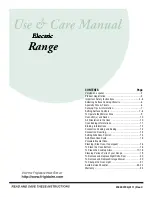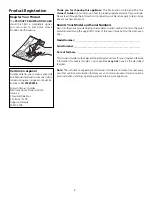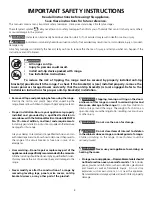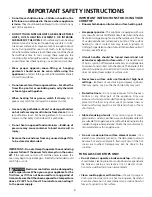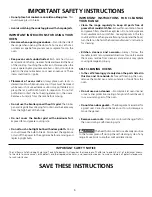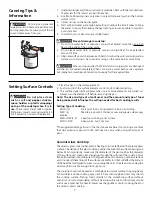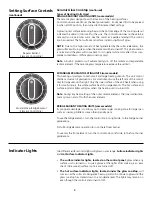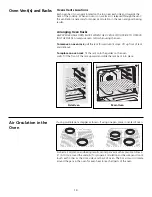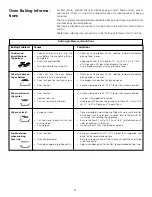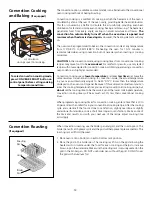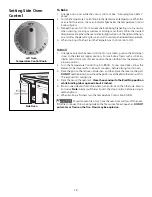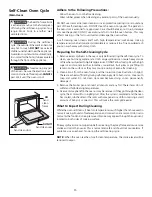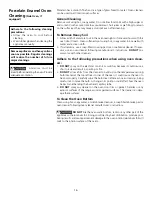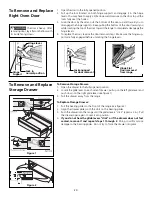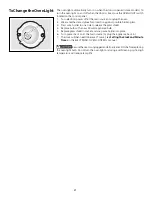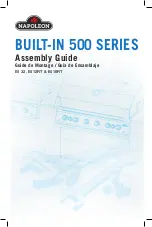
7
Canning Tips &
Information
1.
Use tested recipes and follow instructions carefully. Check with the manufacturer
of glass jars for the latest canning information.
2.
Use flat-bottomed canners only. Heat is spread more evenly when the bottom
surface is flat.
3.
Center canner on the burner grate.
4.
Start with hot water and a high heat setting to reduce the time it takes to bring
the water to a boil; then reduce the heat setting as low as possible to maintain
a constant boil.
5.
It is best to can small amounts and light loads.
Prevent damage to cooktop:
1.
Do not use water bath or pressure canners that extend more than one inch
beyond the edge of the burner grate.
2.
Do not leave water bath or pressure canners on high heat for an extended
amount of time.
3.
Alternate surface units between each batch to allow the units and surrounding
surfaces to cool down. Try to avoid canning on the same burner unit all day.
Safe canning requires that harmful micro-organisms are destroyed
and the jars are sealed completely. When canning in a water bath canner, a gentle
but steady boil must be maintained continuously for the required time.
Canning can generate
large amounts of steam. Use extreme cau-
tion to prevent burns. Always raise the lid
to vent steam away from you.
1. Place the pan on the surface element.
2. Push in and turn the surface element control knob to desired setting.
3. The surface signal light will glow when one or more elements are turned on.
Always turn the element off before removing the pan.
Note:
The size and type of utensil used, and the amount and type of food
being cooked will influence the setting needed for best cooking results.
Setting Type of Cooking
MAX (HI)
Start most foods, bring water to a boil, pan broiling.
MED (5)
Maintain a slow boil, thicken sauces and gravies, steam veg-
etables.
MED-LOW (2-4)
Keep food cooking, poach, stew.
MIN (1-SIM)
Keep warm, melt, simmer.
*
The suggested settings found in the chart above are based on cooking in medium
thickness aluminum pans with lids. Settings may vary when using other types of
pans.
Ceramic Glass Cooktop
The ceramic-glass cooktop has electric heating coils located below the ceramic glass
surface. The design of the glass cooktop outlines the area of the surface heating unit
below. Most importantly, make sure the diameter of the pan matches the diameter
of the surface unit. Heat is transferred up through the surface of the cooktop. Only
flat-bottomed pans should be used. The type and size of cookware, number of surface
units in use and the settings of the surface units are factors that will affect the amount
of the heat that will spread to areas surrounding the units. The areas surrounding the
units may become hot enough to cause burns.
The cooktop should not be used as a cutting board or work surface. Dropping heavy
or hard objects on the cooktop may crack it. Pans with rough bottoms may scratch
the cooktop surface. Placing foods directly on the smoothtop surface (without
utensils) is not recommended as difficult cleaning will result and foods may smoke
and cause a potential fire hazard. Never use the griddle or similar cooking sheet on
the ceramic glass cooktop.
Setting Surface Controls
Do not place items
such as salt and pepper shakers,
spoon holders or plastic wrappings
on top of the cooktop when it is in
use.
These items could melt or ignite.
Potholders, towels or wood could catch
fire if placed too close to the element.

